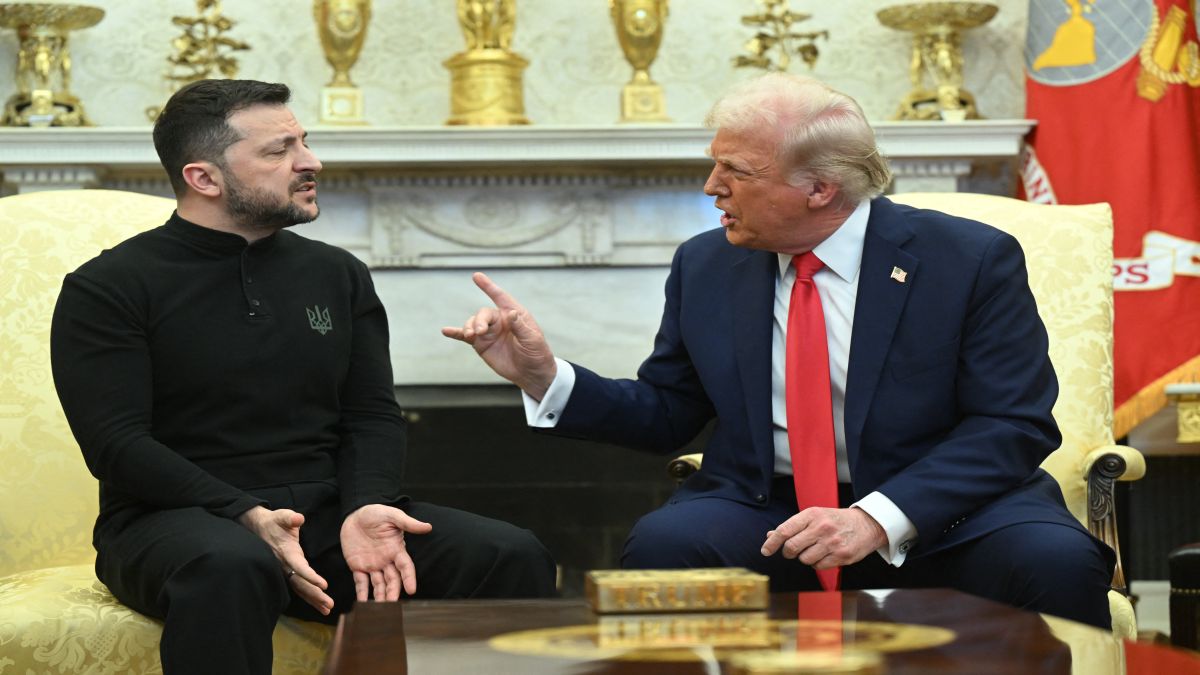The recent talks between the US and Ukraine on Sunday, November 23, 2025, in Geneva are significant because they produced an “updated and refined” version of the original Trump 28-point peace plan, addressing Ukrainian and European concerns that the first draft heavily favoured Russia.
The discussions signal a major diplomatic push by Washington to end the war, while Ukraine seeks to ensure that its fundamental interests—sovereignty, territorial integrity, and credible security guarantees—are preserved in any potential agreement. The original plan’s chances of success were minimal due to its alignment with major Russian demands, and ongoing US diplomacy aims to create a revised framework that is more balanced and potentially viable.
The US delegation was led by Secretary of State Marco Rubio and included special envoy Steve Witkoff and President Donald Trump’s son-in-law, Jared Kushner. Ukraine’s delegation was headed by presidential chief of staff Andrii Yermak. Both sides reported notable progress and described the meetings as “productive and meaningful”. They agreed to continue intensive work to finalise details in the coming days.
Ukrainian officials also held separate meetings with national security advisers from the UK, France, and Germany in Geneva. These consultations took place before their session with the US team and focused on reviewing the American draft plan to end the war with Russia. European leaders had earlier raised concerns that the initial US proposal was too favourable to Moscow and therefore prepared a counter-proposal emphasising Ukrainian sovereignty and stronger security commitments.
Several major obstacles undermined the viability of the original peace plan. First, it required Ukraine to cede control of Crimea, Luhansk, and Donetsk (including areas still held by Kyiv) and freeze the frontlines in Kherson and Zaporizhzhia. This was widely viewed as rewarding Russian aggression and violating Ukraine’s sovereignty. Ukrainian and European leaders made clear they would not recognize Russia’s illegal annexations.
Second, the plan required Ukraine to enshrine in its constitution that it would never join NATO, while NATO would also amend its statutes to block Ukraine’s future membership. Although the plan included alternative security guarantees, critics argued they were vague and lacked the strength of NATO’s Article 5, potentially leaving Ukraine exposed to future attacks.
Third, the proposal sought to cap the size of Ukraine’s armed forces at 600,000 personnel—a major reduction from its current force of over 800,000. Ukrainian troops and European officials regarded this as an infringement on sovereignty and a long-term security risk.
Fourth, the plan offered full amnesty for all parties for actions during the war and called for the gradual lifting of sanctions on Russia. This was unacceptable to Ukraine and its allies, who insist on accountability for war crimes.
The European counter-proposal to the US plan prioritised Ukrainian sovereignty, stricter conditions on frozen Russian assets, and clearer security guarantees. Drafted by the UK, France, and Germany, it was welcomed by Kyiv but immediately rejected by Moscow as “completely unconstructive”.
Following the Geneva talks, the US modified the original plan, reducing it to around 19 points and removing several of Russia’s maximalist demands, particularly those related to NATO membership and territorial concessions. After the discussions, Rubio said there had been a “tremendous amount of progress” but noted that “work remains” before the proposal can be presented to Russia.
Russian President Vladimir Putin had cautiously welcomed the initial 28-point plan as a possible “basis” for negotiations but has not engaged substantively with the revised version. Moscow continues to seek battlefield gains, suggesting that a negotiated settlement remains distant.
Russia’s reaction to the updated, more European-aligned plan is expected to be negative. The Kremlin has stated that the European counter-proposal is “unsuitable” and fails to account for Russia’s interests. Russian officials insist that if their conditions are not met, they are prepared to keep fighting, as they believe their military position is improving and that victory is achievable.
By engaging in the talks on Trump’s revised peace proposal, Ukraine is attempting to ensure that any final agreement includes robust, Western-backed security guarantees to prevent renewed Russian aggression. European allies—initially sidelined and critical of the first draft—are now central to shaping the plan, proposing key revisions on security commitments, military limits, and future NATO aspirations. Their involvement underscores the need for a unified Western approach. At the same time, Ukraine cannot afford to risk losing crucial US military and financial support.
President Trump originally set Thanksgiving Day—November 27—as the deadline for Ukraine to accept the plan, placing heavy pressure on Kyiv. Although US officials have since indicated that the deadline is flexible, the push for a rapid resolution has created a sense of urgency. President Volodymyr Zelenskyy faces intense political pressure, balancing the need to maintain vital US backing with the impossibility of accepting terms that would be seen domestically as capitulation.
In summary, Russia is highly unlikely to accept the “modified peace plan” because the updated version incorporates key Ukrainian and European demands that directly contradict Moscow’s core objectives. The US 28-point plan, which favoured Russia, was seen in Moscow as a potential starting point, but the revised, Western-aligned version has been dismissed as “entirely unconstructive.” Putin and senior Russian officials have repeatedly said that Russia is prepared to continue the war if its conditions are not met. Moscow’s objective remains a final settlement on its own terms—not a temporary ceasefire or frozen conflict.
(The writer is a retired Indian diplomat and had previously served as Ambassador in Kuwait and Morocco and as Consul General in New York. Views expressed in the above piece are personal and solely those of the author. They do not necessarily reflect Firstpost’s views.)
)